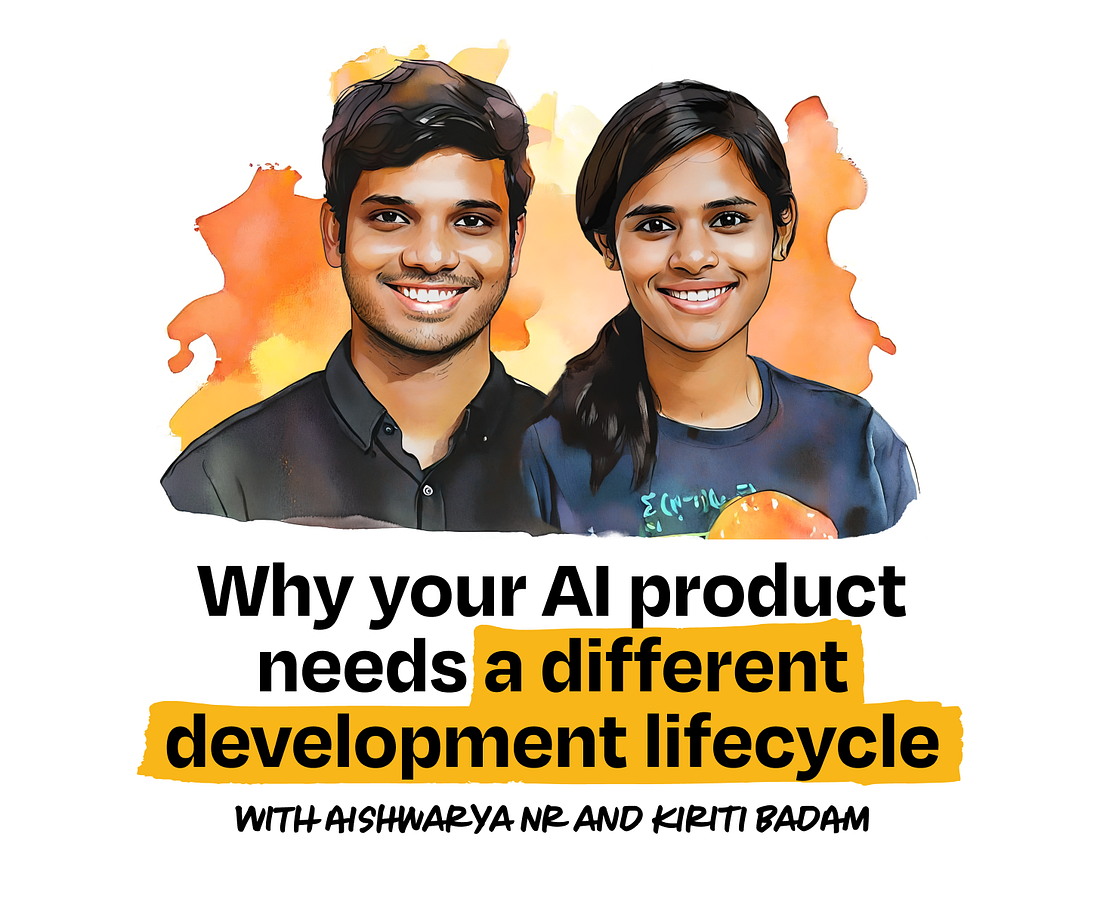|
Why your AI product needs a different development lifecycle
Introducing the Continuous Calibration/Continuous Development (CC/CD) framework
👋 Welcome to a 🔒 paid edition 🔒 of my weekly newsletter. Each week, I tackle reader questions about building product, driving growth, and accelerating your career. For more: Lenny’s Podcast | How I AI | Lennybot | Lenny’s Reads | Courses
P.S. Annual subscribers get a free year of 15+ premium products: Lovable, Replit, Bolt, n8n, Wispr Flow, Descript, Linear, Gamma, Superhuman, Warp, Granola, Perplexity, Raycast, Magic Patterns, Mobbin, and ChatPRD (while supplies last). Subscribe now.
In this AI era, tech leaders need to re-evaluate every single industry best practice for building great products. AI products are just built differently. The teams that realize that and adjust the most quickly will have a huge advantage.
Based on their experience leading over 50 AI implementations at companies including OpenAI, Google, Amazon, Databricks, and Kumo, Aishwarya Reganti and Kiriti Badam have developed the Continuous Calibration/Continuous Development (CC/CD) framework to specifically address the unique challenges of shipping great AI-powered products. In this post, they’re sharing it for the first time with you.
For more from Aish and Kiriti, check out their popular Maven course and their upcoming free lightning talk that explores this topic in depth.
You can also listen to this post in convenient podcast form: Spotify / Apple / YouTube
If you’re a product manager or builder shipping AI features or products, you’ve probably felt this:
Your company is under pressure to launch something with AI. A promising idea takes shape. The team nails the demo, the early reviews look good, and stakeholders are excited. You push hard to ship it to production.
Then things start to break. You’re deep in the weeds, trying to figure out what went wrong. But the issues are tangled and hard to trace, and nothing points to a single fix. Suddenly your entire product approach feels shaky.
We’ve seen this play out again and again. Over the past few years, we’ve helped over 50 companies design, ship, and scale AI-powered autonomous systems with thousands of customers. Across all of these experiences, we’ve seen a common pitfall: people overlook the fact that AI systems fundamentally break the assumptions of traditional software products.
You can’t build AI products like other products, for two reasons:
AI products are inherently non-deterministic
Every AI product must negotiate a tradeoff between agency and control
When companies don’t recognize these differences, their AI products face ripple effects like unexpected failures and poor decision-making. We’ve seen so many teams experience the painful shift from an impressive demo to a system that can’t scale or sustain. And along the way, user trust in the product quietly erodes.
After seeing this pattern play out many times, we developed a new framework for the AI product development lifecycle, based on what we’ve seen in successful deployments. It’s designed to recognize the uniqueness of AI systems and help you build more intentional, stable, and trustworthy products. By the end of this post, you should be able to map your own product to this framework and have a better sense of how to start, where to focus, and how to scale safely.
Let’s walk through the ways that building AI products is different from traditional software.
1. AI products are inherently non-deterministic
Traditional software behaves more or less predictably. Users interact in known ways: clicking buttons, submitting forms, triggering API calls. You write logic that maps those inputs to outcomes. If something breaks, it’s usually a code issue, and you can trace it back.
AI systems behave differently. They introduce non-determinism on both ends: in other words, there’s unpredictability in how users engage and how the system responds.
First, the user interaction surface is far less deterministic. Instead of structured triggers like button clicks, users interact through open-ended prompts, voice commands, or other natural inputs. These are harder to validate, easier to misinterpret, and vary widely in how users express intent.
Second, the system’s behavior is inherently non-deterministic. AI models are trained to generate plausible responses based on patterns, not to follow fixed rules. The same request can produce different results depending on phrasing, context, or even a different model.
This fundamentally changes how you build and ship. You’re no longer designing for a predictable user flow. You’re designing for likely behavior—both from the user and the product—not guaranteed behavior. Your development process needs to account for that uncertainty from the start, continuously calibrating between what you expect and what shows up in the real world.
2. Every AI product negotiates a tradeoff between agency and control
There’s another layer that makes AI systems different, and it’s one we rarely had to think about before with traditional software products: agency.
